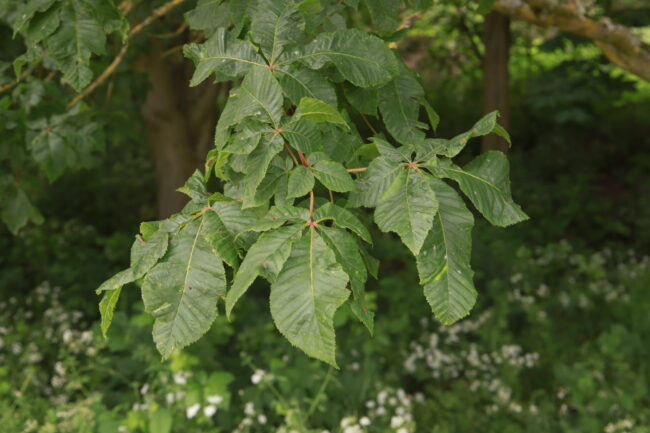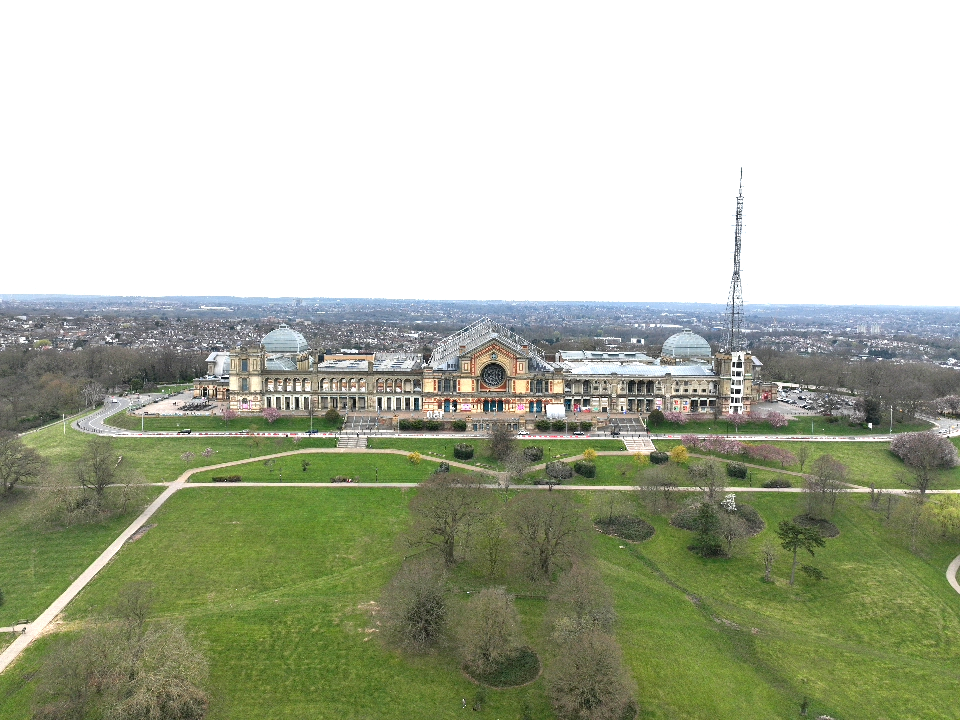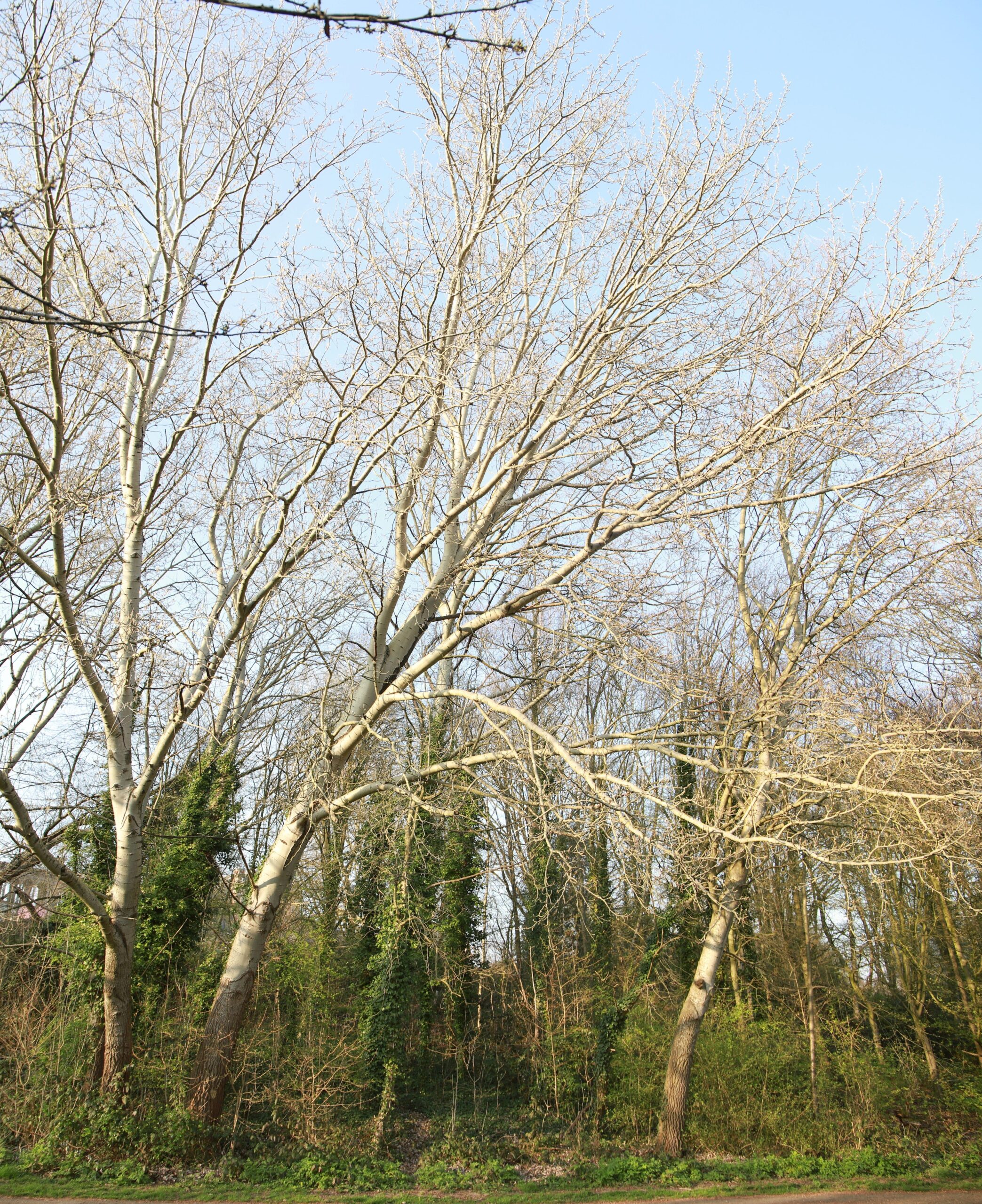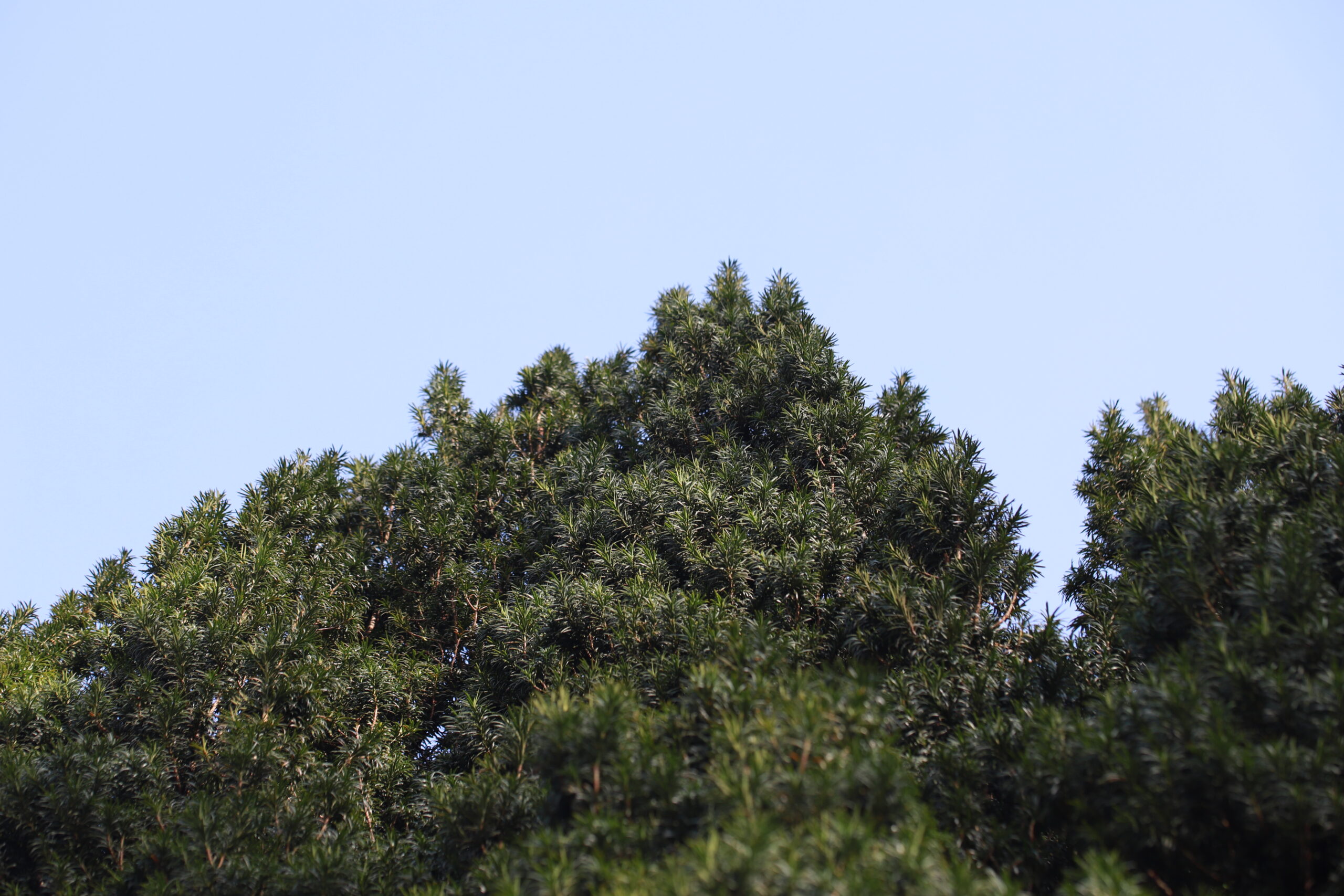There are 7,500 trees in Alexandra Park and Stephen Middleton from the Friends of Alexandra Park is introducing us to some of his favourites…
Spectacular red candelabras of flowers are the prize feature for our Tree of the
Month, the Red Horse-chestnut (Aesculus x carnea). Take the steep tarmac path
down from the Palace and turn left at the bottom onto the Lower Path and shortly on
the left is the red horse-chestnut just after a normal horse-chestnut.
Like all horse-chestnuts, this tree has colourful and changing flowers with the centre
morphing from yellow to red when it is pollinated by insects – typically bees.

If you see a flower that is large and colourful like the horse-chestnuts, it will typically
be pollinated by an animal of some kind, but if the flowers are small and insignificant
they will normally be relying on the wind to fertilise its flowers (e.g. oaks, grasses).
The wind pollinated flowers are the ones that cause the most problems for hay fever
sufferers as large amounts of pollen are produced to ensure that some reach their
target.
This tree has conker shells that are a lot less spiny than those of the horse-chestnut.
The red horse-chestnuts are also slightly smaller growing up to about 10m to 12m
and have not such an elegant spreading shape.
The tree of the month’s leaves are palmate (shaped like a hand) with usually five
leaflets being darker, smaller and a little crinkled compared to those of the
horse-chestnut. Compare the horse-chestnut adjacent to our red horse-chestnut.

As to the scientific name of the tree, the cross indicates that this tree is a hybrid. In
this case the two parent trees are our familiar horse-chestnut and an American
horse-chestnut, the Red Buckeye. This hybrid was first known by about 1820 and was
probably created in Germany.
The two parent trees are not very closely related which normally means that any
offspring produced will be sterile. However this tree will breed true, producing similar
seedlings to its parents. At some stage in the past, the tree doubled the number of its chromosomes giving it the possibility to divide these chromosomes more easily on fertilisation and so to successfully reproduce.
There are more red-horse chestnuts to be found in our park just below the rose
garden.
After this tree has finished flowering, you may spot another type of horse-chestnut
coming into flower in the summer, this is the Indian horse-chestnut, but that is
another story….





